musica (53 resultados)
Tipo de artículo
- Todo tipo de artículos
- Libros (51)
- Revistas y publicaciones
- Cómics
- Partituras (1)
- Arte, grabados y pósters (1)
- Fotografías
- Mapas
-
Manuscritos y
coleccionismo de papel
Condición
Encuadernación
Más atributos
- Primera edición (12)
- Firmado (1)
- Sobrecubierta (4)
- Con imágenes del vendedor (27)
- Sin impresión bajo demanda
Gastos de envío gratis
Ubicación del vendedor
Valoración de los vendedores
-
Il Talismano ossia La Terza Crociata in Palestina Melodramma storico Posto in Musica per l'I.R. Teatro alla Scala. Dedicato a Sua Eccellenza la Sig.a Contessa Giulia Samoyloff nata Contessa di Pahlen.
Publicado por Ricordi, Milano, 1830
Librería: Librería José Porrúa Turanzas S.A., Madrid, España
First Edition â " Primera edicià n. Milano & Firenze, Gio. Ricordi, c.1830. Folio oblongo (232 x 325)mm. (1) hoja de tÃtulo, (1) h. de Ãndice y personajes, 266 pp., 5 láminas grabadas y coloreadas a mano en la à poca representando los escenarios de la obra sobre dibujos de Sanquirico. Encuadernacià n en pleno marroquà n de à poca color azul marino, hilo y rueda dorada enmarcando los planos, lomera cuajada de adornos dorados, rueda dorada en los contracantos, cabeza y cortes tambià n dorados. Primera edicià n de gran rareza extra ilustrado con láminas de Sanquirico. Il Talismano, con libreto de Gaetano Barniere sobre texto de Walter Scott, fue la primera representacià n en el Teatro alla Scala de Milán, representada el 10 de junio de 1829. El libro, todo grabado en plancha, está además ilustrado con 5 magnÃficas láminas grabadas en litografÃa y coloreadas a mano inventadas y dibujadas por Alessandro Sanquirico representando escenarios para la obra de Il Talismano. Giovanni Pacini (1796-1867) fue uno de los grandes compositores de à peras italianas durante la primera mitad del siglo diecinueve. A la edad de doce años comenzà a estudiar canto y contrapunto en Bolonia, componiendo antes de los dieciocho años pequeñas à peras cà micas que tuvieron algún à xito, pero solo en 1817 con la à pera Adelaide e Comingio, actuà en el Teatro Re de Milán, con gran à xito. Comenzaba asà su larga carrera en el mundo de la à pera que le llevarÃa durante medio siglo a componer casi noventa obras superando a cualquier otro músico. Alessandro Sanquirico (1777-1849) fue un dibujante y arquitecto italiano, y uno de los mejores escenà grafos de su tiempo, especializándose en la realizacià n de escenografÃas para à peras, especialmente en el Teatro alla Scala de Milán. En 1838 diseñà las arquitecturas efÃmeras para la coronacià n del emperador Fernando I de Austria como rey de LombardÃa-Venecia, celebrada en la catedral de Milán. Parte de sus producciones y escenografÃas fueron publicadas como grabados en 1824 por S. Stucchi. Las láminas incluidas en este volumen corresponden a los diseños de Sanquirico para esta à pera, están numeradas 165 a 169. Ejemplar de excepcional rareza y belleza, vestido con un marroquà n de à poca azul marino. First edition, of great rarity, extra illustrated with plates by Sanquirico. Il Talismano, with libretto by Gaetano Barniere on a text by Walter Scott, was the first performance at the Teatro alla Scala in Milan, staged on June 10, 1829. The book, with all pages engraved, is also illustrated with 5 magnificent engraved plates in lithograph, hand-colored at the time, invented and drawn by Alessandro Sanquirico representing scenes for the work of Il Talismano. Giovanni Pacini (1796-1867) was one of the great composers of Italian operas during the first half of the nineteenth century. At the age of twelve he began to study song and counterpoint in Bologna, composing before the age of eighteen small comic operas that had some success, but only in 1817 with the opera Adelaide e Comingio, he performed at the Teatro Re in Milan, with great success. Thus began his long career in the world of opera that would take him for half a century to compose almost ninety works, surpassing any other musician. Alessandro Sanquirico (1777-1849) was an Italian draftsman and architect, and one of the best set designers of his time, specializing in the realization of sets for operas, especially at the Teatro alla Scala in Milan. In 1838 he designed the ephemeral architectures for the coronation of Emperor Ferdinand I of Austria as King of Lombardy-Venice, held in the Cathedral of Milan. Part of his productions and scenographies were published as engravings in 1824 by S. Stucchi. The plates included in this volume correspond to Sanquirico's designs for this opera, they are numbered 165 to 169. A copy of exceptional rarity and beauty dressed in a contemporary navy blue morocco binding. 232x325mm. (9¼x12¾").
-
LA MÚSICA CALLADA DEL TOREO
Publicado por Julio Soto impresor, Hispánica de Bibliofilia, Madrid, 1989
Librería: Berrocal Libros Antiguos, Madrid, España
Libro
Encuadernación de tapa dura. Condición: Muy bien. Folio elefántico [96] p, 1 h. con un soneto de Alberti bellísimo dedicado a Bergamín, 1 h. de índice, 1 h. de justificación de tirada y 1 h. de colofón. 10 láminas bellísimas de aguafuertes originales en negro de José Hernández. Caja en pergamino a la romana estampada en rojo. - Nuestro ejemplar corresponde a la tirada de 10 ej. para el editor; la venal se compone de 75 ejemplares. Papel de hilo fuerte sin desbarbar. Ejemplar espléndido. Muy raro.
-
Dialogo di Vincentio Galilei, nobile Fiorentino. Della musica antica, et della moderna
Publicado por In Fiorenza, appresso Giorgio Marescotti appresso Giorgio Marescotti, 1581
Librería: Delirium Books · Susana Bardón, Madrid, España
Original o primera edición
Encuadernación de tapa dura. Condición: Bien. 1ª Edición. Fol. (33,2 x 21 cm.) 2 h. inc. port. grabada en madera, 149 p., 5 h. sin num. de tabla, al vuelto de la última el colofón. Cabeceras, capitulares y grabados en texto, algunos a toda plana. Plena piel del XVIII, lomo desgastado, algo abierto por los cajos, hierros dorados, tejuelo parcialmente conservado. Primera edición de una de las obras más importantes en la historia de la música, en especial de la melodía y la ópera barrocas. Tiene la particularidad de ser el primer libro en contener el primer ejemplo de grabado musical. Vincenzo Galilei, padre de Galileo Galieli, fue un consumado compositor, laudista, cantante y compositor florentino, cuyo rechazo a la polifonía allanó el camino para la ópera. Fue de los primeros músicos en someter el sonido instrumental a la razón de la ciencia empírica. Se dice que fueron los experimentos de Galilei con el sonido el origen de la física experimental, lo que llevaría a su hijo a cuestionarse el mundo para verificar las leyes de la naturaleza como un hecho empírico. Vincenzo Galilei estableció las bases sobre las que se construiría la nueva música , relacionando las palabras y el sonido con el mundo emocional del oyente. Y, desde ese preciso instante, la Teoría de los Afectos dejó de ser solo teoría, convirtiéndose en un lenguaje que hace partícipe de sus efectos al espectador. Última hoja remarginada y con injerto en la mitad inferior. Pequeño desgarro en la esquina superior del fol. 115 sin afectar al texto. Adams G 139; Cinti 6; RISM B. IV, p. 344; Eitner IV, 128; Fetis III, p. 384.
-
Reglas y Advertencias generales que enseñan el modo de tañer todos los instrumentos mejores, y mas usuales, como son la Guitarra, Tiple, Vandola, Cythara, Clavicordio, Organo, Harpa, Psalterio, Bandurria, Violin, Flauta Travesera, Flauta Dulce, y la Flautilla, con varios tañidos, danzas, contradanzas, y otras cosas semejantes, demonstradas, y figuradas en diferentes Laminas finas, por Música, y cifra, al estilo Castellano, Italiano, Catalán, y Francés, para que qualquier Aficionado las pueda comprehender con mucha facilidad, y sin Maestro: con una breve explicación de como el Autor los aprendió, que está al bolver de esta hoja. [7 partes con portadas propias].
Publicado por en la Imprenta del dicho Autor, [y] por Joaquin Ibarra, 1754 - 1774., Madrid,, 1754
Librería: Llibreria Antiquària Delstres, Canet de Mar, BCN, España
[I] Reglas y Advertencias Generales que enseñan el modo de tañer todos los instrumentos [.]. [II] Reglas [.] la Guitarra, Tiple, y Vandola. [III] Reglas, advertencias generales para acompañar sobre la parte con la Guitarra, Clavicordio, Organo, Arpa, Cithara, o qualquier otro instrumento, [.] recopiladas de las obras de Gaspar Sanz. [IV] Reglas [.] para tañer el Psalterio. [V] Reglas [.] para tañer la Bandurria. [VI] Reglas [.] para tañer el Violin. [VII] Reglas[.] para tañer la Flauta Travesera, la Flauta Dulce, y la Flautilla. Rarísima obra completa de todas las partes, y nuestro ejemplar con 2 láminas más de lo que decriben Palau, e Inocencio Ruiz Lasala. En la parte II, esta "segunda edición"(1774), tiene 8 hojas de texto, pero 10 láminas (la primera solo lleva 9). La parte VII, tiene tres láminas: Obué, Flauta dulce, Flauta travesera. El frontispicio que encabeza la obra es un magnífico grabado que represente los músicos con sus instrumentos. I: Frontispicio grabado, 2 hojas de texto, incluida portada tipográfica, y 2 hojas de música notada.- II: 8 hojas, 10 láminas de música notada y instrumentos.- III: 4 hojas, + 1 hoja, 9 láminas de música notada y instrumentos.- IV: 4 hojas, 2 láminas de música y instrumento. - V: 4 hojas, 1 lámina de música y instrumeno.- VI: 4 hojas, 2 láminas de música notada y instrumento.- VII: 2 hojas, 3 láminas de musica notada y instrumentos. Encuadernación de tafilete verde, nervios y hierros dorados en el lomo, doble filete enmarcando los planos y cantos, rueda dorada en los contraplanos, cortes dorados, firmada "Brugalla 1952". Magnífico ejemplar. 14,5x19 cm. Palau 170459 y 170460. Inocencio Ruiz Lasala, 8-14, con variantes.
-
Diccionario de la música
Publicado por Alianza EditorialEdiciones del Prado D.L. 1994, Madrid, 1994
ISBN 10: 8478383980ISBN 13: 9788478383986
Librería: Librería Alonso Quijano, Alcobendas, MADRI, España
Libro
Música(78) Alianza EditorialEdiciones del Prado. Encuadernación en tapa Dura. Valls Gorina, Manuel. 21x13 cm. Diccionario de la músicaTapa deslucida.Tapa ilustrada. Pags.256.Volúmenes. Libro usado.
-
ACORD. QUADERN - MÚSICA 4 ESO (A PROP)
Publicado por TEIDE,EDITORIAL, 2021
ISBN 10: 8430772375ISBN 13: 9788430772377
Librería: Librerias Prometeo y Proteo, Malaga, España
Libro
Rústica. Condición: New. Estado de la sobrecubierta: Nuevo. 01. LIBRO.
-
ACORD. MÚSICA ESO (A PROP)
Publicado por TEIDE,EDITORIAL, 2021
ISBN 10: 8430772367ISBN 13: 9788430772360
Librería: Librerias Prometeo y Proteo, Malaga, España
Libro
Rústica. Condición: New. Estado de la sobrecubierta: Nuevo. 01. LIBRO.
-
MÚSICA III ESO - VALÈNCIA (2016)
Publicado por TEIDE,EDITORIAL, 2016
ISBN 10: 8430786341ISBN 13: 9788430786343
Librería: Librerias Prometeo y Proteo, Malaga, España
Libro
Rústica. Condición: New. Estado de la sobrecubierta: Nuevo. 01. LIBRO.
-
MÚSICA III ESO - VALÈNCIA (CAST) (2016)
Publicado por TEIDE,EDITORIAL, 2016
ISBN 10: 843078635XISBN 13: 9788430786350
Librería: Librerias Prometeo y Proteo, Malaga, España
Libro
Rústica. Condición: New. Estado de la sobrecubierta: Nuevo. 01. LIBRO.
-
Niel, Ona y Àsia vivieron en los años ochenta una juventud frenética entre Cataluña y las islas Pitiusas. Gozaron sin mesura del sexo, la música y las drogas hasta que cayeron en el pozo de la adicción. Treinta años después, instalados en el «tedio decepcionado de los cincuenta» y con muchas cicatrices en el alma, deciden revisitar esa época turbulenta mediante la escritura de un libro. Un libro que, con sus historias de tráficos grandes y pequeños, reencuentros mágicos y funestos, renaceres y recaídas, ofrece un retrato implacable de una generación que vivió al límite y pagó un alto precio por sus excesos. Quince años después de debutar con "Caballos salvajes", Jordi Cussà volvió a escribir en "Formentera lady" sobre los años rojos de la adicción pero, esta vez, con la mirada lúcida de aquellos que lograron sobrevivir."
Publicado por 978-84-122205-7-5
Librería: La Leona LibreRía, San Miguel del Arroyo, Valladolid, España
Sajalín Editores.
-
El Compadrito su destino, sus barrios, su musica - con dedicatoria de J.L. Borges
Publicado por Buenos Aires: Emecé Editores, S.A., 1945, 1945
Librería: °ART...on paper - 20th Century Art Books, Lugano, Suiza
Miembro de asociación: ILAB
Libro Original o primera edición Ejemplar firmado
Hardcover. Condición: Very Good. 1st Edition. Sm.8° - 108pp - B/w reproductions. El Compadrito, its destiny, its neighborhoods, its music - with dedication by Jorge Luis Borges (1899-1986) Argentine short-story writer, essayist, poet and translator regarded as a key figure in Spanish-language and international literature. First edition, text in Spanish language, inscribed by J.L.Borges. Original bards. In very good condition. Inscribed by Author(s).
-
Raccolte di Bellissime Canzonette Musicali, e moderne, di Autori grauissimi nella Poesia, & nella Musica.
Publicado por In Venetia (le parti II e III in Vicenza), per Angelo Salvadori libraro in Venezia a S. Moise, 1622-27, Venezia, 1622
Librería: Libreria Antiquaria Pregliasco, Torino, Italia
Condición: molto buono. 5 parti in un vol. in-8 piccolo, pp. (6), 593 con numerazione unica; bella legatura del primo 900 in pelle, titolo in oro su tassello granata, fregi e filetti in oro su dorso a nervi, triplo riquadro di filetti ai piatti. Impresa tipografica. su ciascun titolo, testatine, finalini e capilettera ornati. La dedica della prima parte è seguita da un'interessante pagina di alfabeto ed intavolatura per chitarra spagnola.Raro volume che riunisce una serie di antologie di canzoni popolari prevalentemente veneziane raccolte da Remigio Romano, pubblicate in anni diversi: I) 1618; II), 1618; III) 1620; IV) 1623; V) 1626), come si può dedurre dalle dediche (apparentemente nessun esempl. delle edizioni precedenti le presenti è sopravvissuto (la sola Nazionale di Firenze possiede 4 parti singole uscite tra il 1622 e il 1626). Edizioni definitive e complete della prima antologia organica delle canzonette. I) Prima raccolta. di auttori grauissimi nella poesia, & nella musica, 1622, pp. (6), 138. II) Seconda raccolta. per cantare e suonare sopra arie moderne, (1622 ?), pp. 139-258. III) Terza raccolta. alla romanesca. Per suonare, e cantare nella chitara alla spagnuola, con la sua intauolatura. Con nuova aggiunta di poesie nuoue, 1622, pp. 259-378. IV) Nuova raccolta (parte quarta). di auttori grauissimi nella poesia; & nella musica,1627, pp. 379-498. V) Ressiduo alla quarta parte di Canzonette Musicali. 1626, pp. 499-593. Probabile prima edizione dell'ultima parte. (Dalla Prefazione alla Nuova raccolta:) ?.quasi industre Giardiniero, da gli ameni Giardini della Poesia, e della Musica, colse i piu vaghi fiori, e di quelli formatone pieggiati fascetti, piu e piu volte vegli presento sotto nome di Raccolte di Canzonette Musicali. Hora havendo veduto con sommo dispiacere, che dalle sue Operette vengono scielte da alcuni le piu belle Canzonette, e queste con miscugli di Frottole li sono ristampate . distillato di quanto di buono, e bello sia stato composto in questo stile Lirico da Poeti Illustri di questi tempi, e maritato alla Musica da piu eccellenti di quest'arte? Di eccezionale rarità, nessun esemplare censito in SBN. Ottimo esemplare, a pieni margini e assai fresco. New information on the chronology of Venetian monody: Music & Letters - 01, 1996: ?The Raccolte prove not only that some songs by Venetian composers were written as much as a decade earlier than their date of publication but also that two composers in particular, Giovanni Pietro Berti (singer and, later, organist at St Mark's) and Carlo Milanuzzi (organist at the Augustinian monastery of S Stefano in Venice), played more prominent roles than Grandi in the developing fashion among Venetian composers for solo settings of strophic canzonettas? RISM n.1625 (9). Cat. ?600 Vinciana n° 4277. Book.
-
Miscellanea musicale [.] divisa in tre parti. Dove con dottrine si discorre delle materie più curiose della musica [.].
Publicado por Bologna, Giacomo Monti, 1689., 1689
Librería: Antiquariat INLIBRIS Gilhofer Nfg. GmbH, Vienna, A, Austria
4to. 3 parts in one volume. (12), 210, (6) pp. With woodcut printer's device, a headpiece and a few woodcut illustrations in the text. Numerous examples of sheet music. Contemporary full vellum with handwritten spine-title. First and only edition. Rare treatise on musical theory by the Italian composer Berardi (1636-94), a highly prolific artist and theorist particularly focused on church music. It includes the "Osanna" from Berardi's "Iste confessor" mass (pp. 69-78) and displays his broad knowledge of relevant publications on the subject, as well as his admiration for other scholars, including Athanasius Kircher, Marin Mersenne, and his teacher Marco Scacchi, all of whom he frequently quotes. The "Miscellanea" discuss, inter alia, the canto fermo, as well as the history of counterpoint and its practice in the 17th century (pp. 112ff.), promotes a more liberal and frequent use of dissonances (pp. 82ff.), and analyses the manner and form of tempi generating different musical effects (pp. 56ff.). It explains the musical forms of the day as well as the relations between classical and modern music, rejecting the "uniformity of the past and preferring melodic composition instead" (cf. MGG). - Head and foot of spine slightly rubbed; covers a little bowed. Paper evenly browned and brownstained throughout; upper margin somewhat waterstained. Handwritten ownership of the friar Griziottus of Piacenza, as well as of Charles Missieli to title-page. Missieli's ownership is further stamped in four places, partly erased from the title-page, p. 122, and final page, but remaining on p. 196. A few marginal notes and highlights in pen and pencil. Rarely seen at auction. - RISM B VI, 138. MGG II, 1174. Eitner I, 451. Fétis I, 349. Gregory/Bartlet I, 31. Hirsch I, 61. Catalogue of Printed Books of Music in the British Museum T, 142. Catalogue of Early Books on Music in the Library of Congress, 31. Graesse I, 338.
-
Alceste. Tragedia. Messa in Musica . Dedicata a sua Altezza Reale, L'Arciduca Pietro Leopoldo Gran-Duca di Toscana . [Partitur]. [In Typendruck].
Publicado por Vienna, G. T. Trattnern., 1769
Librería: Antiquariat J. Voerster, Stuttgart, BW, Alemania
Libro Original o primera edición
Hardcover. Condición: Gut bis sehr gut. 1. Auflage. Folio. 8 leaves, 233 p. A few leaves partly with some inconspicuous traces of moisture. Some pages with basso continuo additions in pencil by old hand under the bass part. Marbled endpapers. Gilt edges. Contemporary red morocco binding with gilt on the spine and gold trim on the covers. Light traces of use. SPLENDID COPY - EXTREMELY RARE - PRACHTEXEMPLAR - EXTREM SELTEN - Extremely rare first printing of the original edition in a magnificent copy. Only 2 copies traceable for us in trade since 1950! This first printing is recognizable by the typography of the preface, which is printed only half-page over 6 pages, and the final page (p. 233) without the note "il Fine". - In the famous preface, Gluck summarizes the principles of his opera reform and his artistic intentions. He was convinced that he could best present his reform ideas on material that was well known to the audience. Previously, the myth of the Alcesti had already been set to music by J.-B. Lully and G. F. Handel. "Gluck was concerned with renewing the musico-dramatic and theatrical potential of the dramma per musica. . Crucial is the concentration on the main plot . [he] intended a new, universally valid genre renewal, which aimed at overcoming the shortcomings of the dramma per musica as well as the tragédie lyrique and at a supranational opera type" (Schneider/Wiesend, Oper im 18. Jhdt., p. 183f.) The premiere at the Vienna Burgtheater was not very successful, since the opera meant "the open declaration of war against the convention of opera" (Einstein p. 147). - Hopkinson 37 A; RISM G (G) 2661; Hoboken 5,2 (here EA 2nd printing); Hirsch II, 261.
-
LA MUSICA, POEMA
Publicado por Imprenta Real, Madrid, 1779
Librería: Phillip J. Pirages Rare Books (ABAA), McMinnville, OR, Estados Unidos de America
Original o primera edición
FIRST EDITION. 235 x 150 mm. (9 1/4 x 6"). 10 p.l., 126, XL pp., [1] leaf (errata). EXCELLENT CONTEMPORARY CRIMSON MOROCCO BY DEROME LE JEUNE (his ticket with address of Rue St. Jacques on verso of front free endpaper), covers framed with thick and thin gilt rules, raised bands, spine compartments with central floral sprig surrounded by a lozenge of small tools, volute cornerpieces, gilt titling, gilt-rolled turn-ins, gilt edges, cobalt blue paste-paper endpapers. WITH SIX CHARMING ENGRAVED ALLEGORICAL PLATES after G. Ferre. Front pastedown with morocco bookplate of Mortimer L. Schiff and small book label with a gilt cipher on a red peach. A Large Paper Copy. Palau y Dulcet IV, 107; RSIM B VI, 429; MGG VI, 1403 f.; Gregory-Bartlett I, 129. â Three minute dents to front board, a hint of wear to bands and corners, isolated faint foxing, blank recto of frontispiece leaf and blank verso of final leaf with faint blue shadown from endpapers, but all of these quite trivial, and otherwise A BEAUTIFUL COPY--fresh, clean, and bright internally, with very wide margins and strong impressions of the plates, and in a lustrous binding showing with few signs of use. This is surely one of the handsomest poetical treatises on music ever produced, and it is offered here in a binding done by one of the finest craftsmen working in Europe during the period of the book's publication. The work is written in the "silva" form of poetry used by persons of high rank, illustrated with fine engravings, and put into elegant morocco by the finest hands among the large Derome family of binders. According to Palau, our first edition is "beautiful, and printed on fine paper." He says further that, although the strongly expressed opinions of the youthful author on contemporary composers caused the work to be "unfairly attacked," it was "appreciated by professors of music and collectors of literature in that genre," especially in Italy and America. A child of the Enlightenment, Iriate (1750-91) gained entry to intellectual and artistic circles in Madrid through his uncle, who was librarian to the king of Spain. He translated works by Horace and Virgil into Spanish by royal request, and wrote criticism, poetry, and dramas. He is best known for his satirical fables on the contemporary literary scene, "Fábulas literarias." There were no fewer than 18 members of the Derome family who made their livings as binders in Paris from the middle of the 17th century until the first quarter of the 19th, but by far the most distinguished family member was Nicolas-Denis, called "le jeune" (1731-88). Known for the gracefulness of his bindings, and for being capable of "amazing delicacy" (in Hobson's words), Derome le jeune was, simply, the leading binder of the day, and his work was much in demand. Because he refused to turn away customers, Derome was forced to hire a number of assistants, whose work he could not always supervise closely. However, Thoinan says that the binder's best work is indicated by the presence of his ticket, as here. The volume's provenance adds to its luster: it was in the distinguished library of American bibliophile Mortimer Schiff (1877-1931). In Dickinson's words, Schiff, a financier and philanthropist, Schiff "brought together an unrivaled collection of decorative bindings." His library included works by great printers, important illustrated books, and works printed on vellum, but chiefly fine and historic bindings. The "Reliures" database of the Bibliothèque Nationale de France commends Schiff for assembling "one of the most important inter-war libraries," noting that his collection was "renowned for its collection of French bindings.".
-
Dell'origine e delle regole della musica colla storia del suo progresso, decadenza, e rinnovazione. Rom, Michelangelo Barbiellini 1774. 4°. 6 Bll., 16 S., 4 Bll., (21)-396 S. u. 393-466 S., 1 Bl., mit gest. Titelvignette, gest. Portrait der Maria Antonia v. Bayern v. Giovanni Brunetti nach Francisco Arnaudies u. 10 gr. gest. Kopfvignetten v. Brunetti nach Arnaudies, 22 gef. gest. Musikbeilagen, 1 gef. Tabelle. Olivbrauner Kalbsldr. d. Zt. mit reicher Rücken- u. Deckelverg., beide Deckel mit goldgepr. u. farb. bemaltem Wappen (Bayern bzw. Sachsen), Rsch., zisel. Goldschn., rot-weiß gewürfelter Kattunpapiervors, in mod. Pp.-Kassette.
Librería: Antiquariat Johannes Müller, Salzburg, Austria
Brunet VI, 10087 - Ebert 7230 - Eitner II, 364 - Graesse II, 537 - MGG III, 1651f. - Palau 85225 - Thieme-B. II, 124 - Toda y Güell 1648 - Wolffheim I, 618.- Erste Ausgabe von Eximenos Hauptwerk, gewidmet Maria Antonia Walburga von Bayern, Kurfürstin von Sachsen, Kunstmäzenin, Komponistin, Opernsängerin, Malerin und Dichterin. Es "zeichnet sich durch die Kühnheit aus, mit der den überkommenen Anschauungen vom Zusammenhang der Musik mit der Mathematik Kampf angesagt wird und selbst die Schriften so namhafter Autoren wie Euler, Tartini, Rameau und d'Alembert angegriffen werden. Der grundlegende Unterschied zwischen der Fundamentalgesetzlichkeit der Mathematik und den musikalischen Regeln, die lediglich Beobachtungsergebnisse sind, wird aufgezeigt. Es genügt, dass der Komp. seinem natürlichen Instinkt folgt; Regeln sind zum Komponieren unnötig. Damit hat Eximeno der Musikanschauung derdeutschen Frühromantik (Herder, Heinse, Wackenroder) vorgearbeitet, wohl ohne von ihr etwas zu wissen." (MGG).- "Obra de gran éxito y estimada. . . La publicación de este libro produjo una revolución literaria en Italia. Eximeno se presenta en ella como un incansable removedor de ideas." (Palau).- Reizend illustriert.- Breitrandig u. nur gering stockfleckig, vord. Vorsatzbl. verso mit zeitgen. Vermerk "Paris M: d: C: di S: A: S: Elettorale", also offenbar ein Geschenk aus der Hand der Widmungsempfängerin, der prächtige Einband mit ihren Wappen gering berieben u. bestoßen sowie mit einigen kleinen Wurmspuren u. Schabstellen.# First edition of a revolutionary work on musical theory anticipating some of the concepts of Richard Wagner.- Illustrated with a fine dedication portrait of Maria Antonia Walburga of Bavaria, widowed Electoral Princess of Saxony, engr. by Giovanni Brunetti after Francesco Aranaudis Catalano and 22 engr. fold. plates with musical notation; also vign. on title, initials, 10 allegorical and mythological engr. headpieces, tailpcs, and 1 printed fold. table. Eximeno y Pujades (1727-1808), a Spanish Jesuit who settled in Rome after the expulsion of his order from Spain, was the 1st scientific exponent of the theory that the aim of music is to express emotion. His book provoked a storm of criticism from noted writers like Padre Martini, but greatly influenced music aesthetics. Eximeno was also one of the 1st to uphold the theory of nationalism in music, arguing that the music of a country should be based on its national song. Bound with the mostly lacking "Riposta al giudizio delle Efemeridi (.)". Ref. RISM B/VI/1:299. DBS III:492-3:8. Hirsch I:162.
-
Le nozze degli Dei, favola dell'Ab. Gio. Carlo Coppola rappresentata in musica in Firenze nelle reali nozze de Sereniss.mi Gran Duchi di Toschana Ferdinando II. e Vittoria principessa d'Urbino
Publicado por Firenze, Amadore Massi e Lorenzo Landi, Firenze, 1637
Librería: Libreria Alberto Govi di F. Govi Sas, Modena, Italia
Condición: Molto buono (Very Good). 0. (Insieme a:) RONDINELLI, Francesco (1589-1665). Relazione delle nozze degli Dei, favola dell'abate Gio: Carlo Coppola. Alla serenissima Vittoria principessa d'Urbino Gran Duchessa di Toscana. In Firenze, nella nuova Stamperia del Massi, e' Landi, 1637.Due opere in un volume in 4to (mm. 242x174). Pp. 50, [2]; [8, incluso il frontespizio calcografico], 104 e 7 tavole ripiegate fuori testo incise in rame da Stefano Della Bella su disegni di Alfonso Parigi. Segnatura: A-F4 G2; ?4 A-N4.Frontalini, finalini e capilettera xilografici. Mezza pergamena con punte del primo Ottocento, piatti rivestiti con carta marmorizzata, tassello con titolo in oro al dorso. Restauro al margine superiore del frontespizio della prima opera senza perdita di testo, leggerissime fioriture marginali. Bella copia di inusuale freschezza e pulizia.PRIMA EDIZIONE del libretto per la ?masque', nella quale viene celebrato il matrimonio tra Vulcano e Venere. Le incisioni, opera di Stefano della Bella, rappresentano la prima grande impresa dell'autore per la corte medicea, dopo essere succeduto a Jacques Callot.Giovanni Carlo Coppola, vescovo di Muro dal 1643, nonché poeta e letterato, nel 1637 fu incaricato di commemorare con un melodramma il matrimonio del Granduca Ferdinando II de' Medici (1610-1670) con la principessa Vittoria della Rovere di Urbino (1622-1694). L'opera, nonostante la fretta con cui fu pensata e scritta, rispetta i canoni letterari convenzionali del tempo e va incontro al gusto del pubblico, amante del bizzarro, del complicato e dello spettacoloso.L'autore, spinto dall'intento encomiastico e celebrativo, fece ricorso a tutto il suo sapere classico e mitologico, che qualche anno prima aveva felicemente utilizzato per la stesura del poema sacro Maria Concetta e successivamente per il Cosmo o vero l'Italia Trionfante, che gli procurarono grande fama. Nell'opera, strutturata in un prologo e cinque atti, vi è concordanza fra musica e poesia. Il linguaggio letterario risulta quasi sempre chiaro, con toni tasseschi ed elementi che richiamano il Petrarca e il Poliziano. La Favola fu musicata dal celebre compositore Francesco Saracinelli, che si avvalse della collaborazione di cinque fra i principali compositori attivi a Firenze in quel periodo, dei quali tuttavia non si fanno i nomi (tra essi molto probabilmente Marco da Gagliano, Francesca Caccini e Jacopo Peri). L'esecuzione fu affidata invece ad un'orchestra di 150 elementi. Dell'allestimento scenografico si occupò Alfonso Parigi che dovette affrontare numerose difficoltà, avendo deciso Ferdinando II di far allestire la festa nel cortile del proprio palazzo ed avendo questi richiesto di ricreare mondi marini, terrestri e celestiali popolati da dei e mostri della mitologia classica che richiesero complicatissime macchine sceniche. Delle coreografie si occupò Agnolo Ricci, che curò sapientemente i balletti tra una scena e l'altra. L'opera, messa in scena nel cortile di Palazzo Pitti a Firenze l'8 luglio del 1637 fu l'ultima ad essere ospitata nei teatri di corte medicei.Francesco Rondinelli, dopo la rappresentazione dell'opera di Coppola, decise di dare alle stampe una ?piccola Relazione [?] acciocché quelli, che la videro, leggendola, possano rinfrescarsene la memoria, & il diletto, e quelli, che per lontananza di luogo, o di tempo non l'hanno goduta, ne partecipino in quel modo, che è possibile?.Berlin Kat., 4116; Brunet, II, 262; De Vesme, 918-925; Nagler, Theater Festivals of the Medici, pp.162-74; Watanabe-O'Kelly & Simon 1285; Sonneck (opera librettos), p. 806; The New Grove Dictionary of Opera, III, 855; Clubb, 311. Book.
-
Il Ballarino diviso in due Trattati; nel primo de' quali si dimostra la diversità dei nomi che si danno à gli atti & movimenti che intervengono ne i Balli Nel secondo s'insegnano diverse sorti di Balli, & Ballerini si' all'uso d'Italia come a quello di Francia e Spagna. Ornato di molte figure. Et con l'intavolatura di Liuto & il Soprano della Musica nella sonata di ciascun Ballo. Opera nuovamente mandata in luce.
Librería: Libreria Antiquaria Tonini, Ravenna, Italia
Venezia, Ziletti, 1581; 2 parti (con frontesp. proprio) in 1 vol. in 4; perfetta leg. p. perg. rigida (di poco posteriore); cc. 8 n.n. (ultima b.) + 16; cc. 184 + 4 n.n. Marca tipogr. ai 2 frontesp.; una grande quantità di capolettera decorati, di testatine e finalini (in legno) e 22 bellissime illustraz. a piena pagina inquadrate da larga cornice, finemente inc. in rame da GIACOMO FRANCO, che mostrano coppie di ballerini nei loro eleganti costumi d'epoca mentre eseguono passi di danza; numerosi esempi di musica sempre n.t. ESEMPL. IN COMPLESSO MOLTO BUONO E MOLTO FRESCO; margini più che discreti ma essendo la giustezza delle illustrazioni più larga del testo, molte di queste sono toccate (di 1 o 2 mm) nella cornice, dal rifilo del margine esterno (che rimane più che discreto per il testo). MANCA IL RITRATTO DELL'A. e due delle illustrazioni (cc. 13 e 16) provengono da altro esemplare: la 16 è legg. colorata. Prima edizione della più bella ed importante opera sulla danza del '500. Magriel; p. 44: "This is the first edition of this important book on the social dances of the period." Fetis; 2; 194: "Cet ouvrage est intéressant pour l'histoire de la musique, parcequ'il contient les airs de danse du XVI siècle". Colas, 532. Gamba, 1293. Cicognara, 1616. Libro.
-
L'Illustrazione Italiana. Rivista settimanale degli avvenimenti e personaggi contemporanei sopra la storia del giorno, la vita pubblica e sociale, scienze, belle arti, geografia e viaggi, teatri, musica, mode, ecc.
Año de publicación: 1875
Librería: Libreria Piani, Monte San Pietro, BO, Italia
Libro
Milano, Treves (e Garzanti, dal 1940) 1875/1962, abbiamo disponibili le annate dal 1875 al 1943. Raccolta pressochè completa di 66 annate della rivista rilegate in 137 volumi in-4° (cm. 40 x 30 circa) i primi 66 volumi (dal 1875 al 1915) rilegati mezza pelle d'epoca con titoli e fregi dorati al dorso, i restanti volumi (dal 1916 al 1943) rilegati tutta tela marrone coeva con titoli ai dorsi e impressioni a secco ai piatti, tutta tela verde con tassello e fregi dorati ai dorsi (l'annata 1937 è in fascicoli sciolti). Ciascuna annata è composta da 52 o 53 fascicoli completamente illustrati da incisioni, litografie, fotografie e tavole in nero, talora anche doppie o ripiegate, in nero e a colori. Serie cronologica con le seguenti mancanze: 1889 manca il primo semestre, 1914 manca il primo semestre, 1943 mancano i fascicoli dal 30 al 52. Il 1º novembre 1875, esce il primo numero de L'illustrazione italiana (si tratta effettivamente del primo numero anche se al frontespizio viene citato l'Anno III in quanto nel corso del 1874 i fratelli Treves, già editori della rivista ?Nuova illustrazione universale? rilevano una rivista concorrente che stava dando buona prova di sé a Roma: «L'Illustrazione. Rivista italiana», diretta dall'artista romano Alessandro Foli. Dall'unione delle due riviste nacque L'illustrazione italiana, che uscì con la nuova testata a partire dal 1º novembre 1875) e comincia ad avere un'ampia diffusione negli ambienti della medio-alta borghesia, grazie alla qualità degli articoli e soprattutto delle illustrazioni, spesso affidate ad artisti di primo piano come Achille Beltrame, Pietro Scoppetta, Luigi Bompard, Giuseppe Cosenza ed Ettore Ximenes (il quale svolgeva anche le funzioni di vicedirettore). Oltre che all'opera di artisti di grido, il pregio delle fonti iconografiche era dovuto anche alla scelta di utilizzare per la stampa incisioni in legno invece che litografie, che consentivano di ottenere un'altissima resa a partire dai bozzetti di base. Tale qualità fu mantenuta poi nel tempo anche in seguito all'avvento della fotografia, tecnica che vide rappresentati sulle pagine dell'?Illustrazione? alcuni tra i migliori fotogiornalisti nazionali: Armando Bruni, Mario Crimella, Giulio Parisio ed Emilio Sommariva[5]. La prima fotografia venne pubblicata sul numero del 18 luglio 1885 (una spada del XVI secolo conservata nel Museo Poldi Pezzoli di Milano). Con l'avvento della fotografia la rivista adottò la carta patinata, che garantiva una migliore qualità delle immagini. Per quanto riguarda la scrittura dei testi, il periodico si avvalse della collaborazione, in qualità di articolisti, di alcuni dei nomi più importanti della letteratura italiana, Giosuè Carducci, Grazia Deledda e Luigi Pirandello (premi Nobel per la letteratura), Giovanni Verga, Gabriele D'Annunzio, Luigi Capuana, Edmondo De Amicis. La grande fortuna dell'Illustrazione Italiana durò fino alla morte di Emilio Treves (1916), dopo la quale, pur avendo ancora tra i propri collaboratori scrittori del calibro di Eugenio Montale, Elio Vittorini, Salvatore Quasimodo, Riccardo Bacchelli e altri, la rivista cominciò a mostrare i segni di un lento declino. La promulgazione delle leggi razziali fasciste accelerò il processo in atto: nel 1939 la Treves dovette cedere l'azienda alla Garzanti. Verso la metà del 1942, in seguito agli eventi della seconda guerra mondiale, L'Illustrazione rallentò le sue uscite, fino ad essere trasformata in mensile nel 1951 da Livio Garzanti. Gli anni cinquanta con la crescita vertiginosa dei rotocalchi, settimanali popolari di attualità. L'Illustrazione Italiana vide ridursi progressivamente il suo spazio, finché Garzanti la chiuse nel dicembre 1962. Cfr. web.
-
Duo dialoghi della Musica del Signor Luigi Dentice Gentil'huomo Napolitano. Delli quali l'uno tratta della Theorica, & l'altro della Pratica: Raccolti da diversi Autori Greci, & Latini. Nuovamente posti in luce
Publicado por Appresso Vincenzo Lucrino, Roma, 1553
Librería: J & J LUBRANO MUSIC ANTIQUARIANS LLC, Syosset, NY, Estados Unidos de America
Octavo. Full carta rustica. 1f. (recto title with woodcut device, verso blank) + 39ff. (A in two, B-K in four, L in two). With diagrams, several musical examples, and historiated woodcut initials and head- and tailpieces. In a custom-made ivory vellum-backed box with octagonal vellum manuscript title label to upper. Early manuscript additions to several pages (verso of C4, recto of D1, verso of F4, recto of G1, verso of G2, and verso of L2) and "4" in manuscript to head of title. Binding slightly worn, soiled, and foxed. Minor internal wear; title slightly soiled, small holes archivally repaired; title and following leaf slightly browned; box worn. Rare second edition of the work first published one year earlier. Cortot, p. 60. Davidsson, p. 26. Gregory-Sonneck, p. 72. Hirsch I, 142. Wolffheim I, 591. RISM Écrits, p. 260 (the 1552 edition). Only two copies recorded at auction by Rare Book Hub, one in 1990 and the other in 1995, with no copies coming to auction since. Dentice was a Neapolitan composer, theorist, singer, and lutenist, admired by Henry VIII. His most notable contribution to music theory is the present work, a collection of classical Greek and Latin writings on music with his own commentary, including reflections on contemporary music and musicians, musica ficta, and monody. The section on performance practice contains a description of a concert and includes observations on both instrumentalist and singers, naming Giaches da Ferrara (possibly the composer Giaches de Wert 1535-1596, a Flemish composer active in Italy) and a male soprano. The "Duo dialoghi (Naples, 1552), dedicated to Giulio Cesare Brancaccio, benefited from his long conversations with Angelo di Costanzo (a manuscript copy, possibly an autograph, with four anonymous textless, four-voice compositions appended, is in I-Fc). In the first dialogue he discussed Greek music theory and in the second the technique of counterpoint and a few aspects of performing practice." Keith A. Larson in Grove Music Online.
-
Musica Theorica Ludovici Foliani Mutinensis. in qua plures de Harmonicis Intervallis: non prius tentata: continentur speculationes.
Publicado por (In fine, recto f.43:) Venetiis, per Io. Antonium & Fratres de Sabio, MDXXIX Mense Julii (Venezia, Nicolini da Sabio, Luglio 1529),, Venezia, 1529
Librería: Libreria Antiquaria Pregliasco, Torino, Italia
Condición: molto buono. in-folio piccolo (280x200 mm), ff. (2), XLIII, 1 bianco, leg. inizio 800 piena pergamena, con riquadri in oro ai piatti, titolo impresso su quello anteriore, dorso a nervi con fregi e tit. oro. Prima ed unica edizione di uno dei più eleganti libri di musica di ogni epoca, supendamente illustrato da 70 silografie su mezza pag., raffiguranti suonatori di strumenti a tastiera, in eleganti abiti cinquecenteschi, e grafici di teoria musicale. Il Fogliano, fratello dell'organista Giacomo, nato a Modena sul finire del XV sec., fu nel 1513-14 cantore della Cappella Giulia in San Pietro, e poi a Modena al servizio del Cardinale d'Este. Nel suo trattato sono esposti e dimostrati i principi armonici, ripresi poi dallo Zarlino, ''allo scopo di conciliare fra loro tutti gli elementi che verso la fine del XVII secolo e l'inizio del XVIII dovevano concorrere alla formazione del temperamento equabile. Abbandonando le teorie pitagoriche, restaurò il metodo aristotelico di ricerca per lo studio dei fenomeni del suono e dell'udito'' (Encicl. d Musica III, 8). L'opera è di grande rilievo per gli indirizzi opposti a quelli dominanti nella teoria del primo Rinascimento di matrice pitagorica e neoplatonica: Fogliano adotta invece il modello aristotelico e propone l'intonazione sul comma sintonico di Tolomeo. Il teorico modenese era celebre ai tempi suoi anche per la vasta cultura filosofica.Libro di assoluta rarità. Bell'esemplare marginoso (ma due illustrazioni. fuori formato risultano lievem. rifilate in basso come in tutti gli esemplari. Sander: ''les planches des ff. 38 et 39 sont généralement, rognées''); due note di possesso al tit., qualche fioritura nei margini. RISM B VI, 320. Eitner IV, 20. Fétis III, 285. Gregory-Bartlett I, 91. Wolffheim I, 636. Hirsch I, 176. Book.
-
Paride ed Elena. Dramma per Musica. Dedicato a sua Altezza, il Signor Duca Don Giovanni di Braganza etc. etc. etc.
Librería: Antiquariaat Wim de Goeij, Kalmthout, ANTW, Belgica
Miembro de asociación: ILAB
Original o primera edición
Vienna ( Wien ) , nella stamparia aulica di Giovanni Tomaso de Trattnern, 1770, in-folio, 386 x 280 mm , half title + title + (4) nn pp ( dedication) + (4) nn pp + 233 pp (score) + (1)(bl), complete. Bound in half leather with marbled boards, red title label on spine (modern). First leaves with some thumbmarks, but a fine copy. Copy from the library of D. van Reysschoot - Gent, with his blindstamp in the upper right corner of the half title. He was a professor at the Academy of Music in Ghendt (Flanders) at the beginning of the 20th century. Inserted is a letter of the wellknown Berliner music antiquarian Leo Liepmannssohn offering 1800 Belgian francs for this book ( dated 29 januari 1930). Obviously this deal did not work out as we could purchase the book in Belgium. Parida ed Elena , in first edition here , is the socalled third and last program opera by Gluck (after ''Orfeo and Euridice'' and ''Alceste''). In the 4 pp introduction/dedication the composer states again some ideas which guided him by the composition of this opera. This text, in Italian, marks the beginning of a new artistic awareness in Western music. The complete score is entirely printed in woodcut by Johann Thomas von Trattner (1719 - 1798) one of the most important bookprinters of the 18th century in Austria, who became a wealthy society figure and was intimately befriended with Mozart. He lived in the Trattnerhof, where Mozart organized subscription concerts in 1784. His second wife Maria Theresia von Nagel was one of Mozart's pupils.
-
Nobiltà di dame, libro altra volta chiamato il Ballarino. Libro,altra volta,chiamato il ballarino . : Aggiontovi il basso,et il Soprano della Musica:et con l'intavolatura del Liuto a? ciascun ballo . Nuovamente dal proprio Auttore corretto, ampliato di nuovi Balli,di belle regole et alla perfetta Theorica ridotto: Con le creanze necessarie a? Cavalieri ,e Dame.Ornato di vaghe & bellissime Figure in Rame. Alli ser.mi sig.ri Duca, et Duchessa di Parma, e di Piacenza, &c.
Publicado por Veetia, presso il Muschio, ad istantia dell'auttore, 1600,, Venezia, 1600
Librería: Libreria Antiquaria Pregliasco, Torino, Italia
Condición: molto buono. in-4, (ff. 12), pp. 370, (ff. 3), legatura coeva in pergamena floscia, titolo ms. al dorso. Frontespizio inciso, con titolo entro elaborata cornice architettonica, tavola incisa con ritratti in ovale dei Duca e Duchessa di Parma e Piacenza e 35 magnifiche incisioni a piena pagina di coppie di ballerini, realizzate da Giacomo Franco. Ciascuna tavola ritrae una dama e un gentiluomo, in magnifici abiti d'epoca testimonianza della moda del tempo, con rimarcabili dettaglio e nitidezza. Seconda edizione, dedicata a Ranuccio Farnese e Margherita Aldobrandina, largamente ampliata dal Caroso stesso (compositore e coreografo, 1526- ca. 1605) rispetto alla prima, pubblicata nel 1581. Celebre quanto bella opera cincequecentesca dedicata al ballo e alla musica di accompagnamento alla danza: descrive i balli più apprezzati presso le corti italiana, francese e spagnola, includendo anche le arie musicali, con relativa notazione per liuto. (C. W. Beaumont, Bibl. Of Dancing, pp.24-25). Esemplare assai bello, fresco e marginoso. Magriel, Bibl. of dancing, p.44; Eitner II, 341. Derra de Moroda, 528. Teatro Regio, Mostra del libro e documento di danza, p.58. Non presente in: Mortimer Italia e Beaumont. . Book.
-
Música. Desenhos de Júlio gravados em linol. Palavras de José Régio
Publicado por Presença, (Coimbra), 1931
Original o primera edición
Condición: Fine condition. First edition. First edition. In original illustrated wrappers. 7 lino. Extremely rare work by Regio, who made the 7 linocut illustrations. In 1927 José Regio founded the magazine Presença which would come to be a cornerstone of the Second Modernism movement in Portugal, of which he was the main spokesperson. In original illustrated wrappers.
-
Le Istitutioni harmoniche nelle quali; oltra le materie appartenenti alla musica; si trovano dichiarati molti luoghi di Poeti, d'Historici, & di Filosofi
Publicado por Venice, [Pietro da Fino], 1558., 1558
Librería: Bernard Quaritch Ltd ABA ILAB, London, Reino Unido
Original o primera edición
Folio, pp.[12], 347, [1]; woodcut publisher's device to title-page; woodcut initials, woodcut diagrams in parts I and II, woodcut music in parts III and IV; damp-stains to foot of first third of text and to head towards the end, short wormtracks to blank upper margin of first three leaves, upper outer corner of the last leaf restored; withal a good copy in eighteenth-century quarter vellum and paper boards, block-printed in red, black and ochre in a floral pattern; ownership inscription 'De i libri del Cave Anto Benedetti' dated 1636 to the foot of the title-page; presentation inscription to head of title from the bibliophile, musician and soldier General Émile Mellinet (1798 1894) to the composer and musicologist Jean-Georges Kastner (1810 1867).First edition, rare, of 'arguably the most important and influential book in the history of music theory [It] opened the way for the new tonality which has governed music from the seventeenth century to the present day' (PMM).'Le istitutioni harmoniche (1558) is one of the most important works of music theory. Zarlino [1517 1590] aimed in it to unite speculative theory with the practice of composition on the grounds that "music considered in its ultimate perfection contains these two parts so closely joined that one cannot be separated from the other" (i, 2). The composer must not be content to master his craft; he should know the reason for what he does, and this can be discovered through an alliance of the rational and sensory faculties. The first two parts (they are designated "books" in the 1573 edition) present the traditional curriculum of musica theorica from a fresh viewpoint. In part I Zarlino reviewed the philosophical, cosmological, and mathematical basis of music. Part II sets forth the Greek tonal system and supplants it with a modern theory of consonances and tuning Zarlino acknowledged that the numerical criteria that he established in parts I and II for the tuning of the consonances did not apply to instrumental music, which employed artificial tunings made necessary by the imperfection of instruments. But in the natural medium of the voice it was possible, he maintained, to realize all the inherent perfection of harmony' (Grove online). Zarlino's rules of counterpoint had wide influence across Europe, but his theoretical foundations were quickly challenged, first by Giovanni Battista Benedetti, and then by Vincenzo Galileo, whose Dialogo (1581) 'pointed out numerous instances in which Zarlino had misunderstood his ancient sources. Zarlino replied at great length in his Sopplimenti musicali (1588), in which he displayed much greater penetration into the ancient authors, particularly Aristoxenus and Ptolemy than in Le istitutioni harmoniche; but he failed to refute Galilei's valid criticisms' (ibid.).Provenance: General Mellinet inscribed this copy 'à l'ami Georges Kastner pendant la campagne d'Italie 1859'. The Second Italian War of Independence was fought in that year between the Second Empire, with the Kingdom of Sardinia, and the Austrian Empire, and helped pave the way towards Italian unification. Kastner published several works on military music (at least one mentioning Mellinet) and both were friends with Adolphe Sax. Printing and the Mind of Man 81; Eitner X 331-332; Gregory & Bartlett 296; Graesse VIII 508; Grove 20-646. Language: Italian.
-
L'Antica Musica ridotta alla Moderna Prattica, con la dichiaratione, et con gli essempi de i tre generi, con le loro spetie. Et con l'inven- tione di uno nuovo stromento, nel quale si contiene tutta la perfetta musica, con molti segreti musicali. Nuovamente mess'in luce
Publicado por Roma, Antonio Barre, Roma, 1555
Librería: Govi Rare Books LLC, New York, NY, Estados Unidos de America
Original o primera edición
Condición: Buono (Good). Folio (287x194 mm). 146, [6] leaves and [8] woodcut folding plates. Collation: A-Z6 AA6 BB8. With the printer's device on the title page showing Orpheus under a tree playing the viola and the author's portrait, at the age of 44, printed on its verso, music notation in text. Old pol- ished gilt calf, marbled edges, contemporary ownership's inscription on the title page: ?Est S. Petri de Perusio'; below the initials ?D.d.M.' and the date 1857, Small marginal tear to leaf D4 with no damage to the text, title page lightly soiled, but a very fine copy. VERY RARE FIRST EDITION, first issue (the work was re-issued with just the date changed on the title page in 1557) of one of the most influential music theory books of the sixteenth century, dedicated to Cardinal Ippolito II d'Este. The Renaissance musicologist Edward Lowinsky (1967) acknowledges Vicentino as ?the greatest revolutionary of the sixteenth century [.] The epochal significance of his treatise lies in the fact that here is the first esthetics of music in which every element of sound: melody, harmony, rhythm, texture, choice of instruments, manner of performance is critically examined as to its expressive potential, and in which the relativity of each element in varying contexts is demonstrated? (E.E. Lowinsky, The musical avant-garde of the Renaissance or: The peril and profit of foresight, in: ?Art, science and history in the Renais- sance?, C. S. Singleton, ed., Baltimore, MD , 1967, p. 133). Unlike most early theorists, Vicentino, who was a pupil of the Flemish-Venetian composer Adrian Willaert, did not simply summarize the practice of his time, but also attempted to adapt the Greek musical modes to the purpose of modern harmonic singing and instrumental performance. His major contribution is the adaptation of the ancient Greek chromatic and enharmonic genera to modern polyphonic practice. Anticipating Vincenzo Galilei and Claudio Monteverdi, Vicentino also expressed avant-garde's views on the relation between music and text. He stated that, in order to better express the feelings of a verbal text, mu- sic should be sometimes allowed to break the strict rules of counterpoint. ?For centuries, tuning systems were central to music theoretical discussions as they laid out the raw materials for composition. However, surviving compositions that explicitly require a specific tuning system are rare. Nicola Vicentino's treatise Ancient Music Adapted to Modern Practice provides an original theory of intervals and tuning, as well as compositions that strive to embody his theory. Vicentino's musical philosophy involves the listener's emotions and reason and argues that perception is an important consideration in the development of theories and in writing music. Vicentino's compositions offer a unique opportunity to investigate perception in the context of a novel tuning system and elucidate what kinds of musical choices and contexts best highlight the nuances of his system. The present paper reports the results of two perceptual studies that investigated the ability of musically trained listeners to discriminate between short musical excerpts for voices presented in Vicentino's 31-tone tuning system and in the standard 12-tone equal temperament. Modern tuning software has made it pos- sible to have natural voices singing, but to precisely control the tuning of each note, all the while leaving the natural variation of jitter and vibrato if needed. Musical and acoustical correlates were also examined to determine whether musical context had an effect on discrimination performance? (S. McAdams et al., Perception of Vicentino's 31-tone tuning system, in: ?Journal of Interdisciplinary Music Stud- ies?, 8/1&2, 2014-2016, p. 158). ?This treatise is a major contribution to the growing movement that sought to free both theory and practice from a dependence on the traditional ecclesiastical modes. Of particular interest is his description of the 'arcicembalo', a unique harpsichord that was built with two keyboards, each contain- ing three orders of keys. This construction allows the performer to play intervals smaller than a semitone as well as the possibility of playing pure intervals against tempered intervals in any key. Thus, for the first time, ancient Greek theory as well as progressive free chromaticism could be realized, and from this would gradually emerge ?the stabilization tuning into the equal temperament of more modern times'. Vicentino was also interested in both the melodic and vertical functions of intervals, which is remarkable for this period. Understandably, his theories generated fervent opposition both from his contemporaries and later from the likes of Zarlino, Artusi, and Doni. The French printer Antonio Barré, although primarily a printer of music, produced twenty music books during his career, of which this is the most famous. Vicentino's treatise is also significant as a very early example of the printing of the natural sign from type (R.H. Cowden, A Collector's Journey: Notable Music Books Written Prior to 1800, New Castle, DE, 2015, pp. 24-25). Little is known of Nicola Vicentino's early life. He was born in Vicenza, and may have studied with Adrian Willaert in Venice. He acquired an early interest in the contemporary humanistic revival, in- cluding the study of ancient Greek music theory and performance practice, about which little was known, but was then being uncovered, through the work of scholars such as Girolamo Mei and Gian- giorgio Trissino. At some time in the 1530s or early 1540s he went to Ferrara, which was to become the center for experimental secular music in Italy from the middle to the end of the 16th century. Apparently, he served as a music tutor to the Duke of Este as well as some of his family members, and some of Vicentino's music was sung at the court of Ferrara. During the late 1540s his reputation as a music theorist grew. He established his reputation as a composer with his publication of a book of.
-
Il Flauto Magico. Dramma per musica [ ] Die Zauberfloete. Grosse Oper in zwey Ackten.
Publicado por Bonn, N. Simrock, [1814]., 1814
Librería: Antiquariat INLIBRIS Gilhofer Nfg. GmbH, Vienna, A, Austria
Original o primera edición
Folio (264 x 325 mm). Engraved title page, 1 p. of engraved dramatis personae, pp. 3-363 engraved notes. Plate number 1092. Contemporary red half morocco with giltstamped spine and cover title. First edition of the full orchestral score, with the libretto by Emanuel Schikaneder. In the "Allgemeine musikalische Zeitung" of 13 September 1815, the publisher Simrock claimed that it was "in accordance with Mozart's own wishes". First shown on 30 September 1791 at Schikaneder's Freihaus-Theater, the opera today counts among the most popular and most frequently performed ever. - Slight browning; occasional pencil annotations; a contemporary stitch-hole throughout the upper left corner. The highly appealing binding is insignificantly rubbed in places. Provenance: first in the library of the Berlin composer and musical educator Carl Friedrich Rungenhagen (1778-1851), a close friend of Zelter's, with his autograph ownership on the title page: "Von Fr. H-d am 13. 9br 1822 an C. F. Rungenhagen". Later in the collection of the classicist and musical scholar Friedrich Spiro (1863-1940) with his autograph ownership on the reverse of the title page (dated Berlin 1886) and stamps. Latterly in the collection of Pierre Bergé (1930-2017) with his bookplate inside the front cover. - KV 620. RISM M 4772. Clément 1172. Riemann 616. Sonneck 119. Towers 680. Hirsch II, 681.
-
Il Ballarino, diviso in due trattati; nel primo de' quali si dimostra la diversita de i nomi, che si danno a gli atti, & movimenti, che intervengono ne i balli: et con molte regole si dichiara con quali creanze et in che modo debbano farsi. Nel secondo s'insegnano diverse sorti di balli, & balletti, sì all'uso d'Italia come à quello di Francia & Spagna. Ornato di molte figure. Et con l'intavolatura di liuto, & il soprano della musica nella sonata di ciascun ballo. Opera nuovamente mandata in luce.
Publicado por In Venetia, Appresso Francesco Ziletti, 1581, Venezia, 1581
Librería: Libreria Antiquaria Pregliasco, Torino, Italia
Condición: molto buono. in-4 (mm 236x170), ff. (8 con titolo con impresa editoriale, dediche e Sonetti a Bianca Cappello, dedica ai Lettori ".Hora io havendo già consumato anni ventisette in questa professione.", Sonetti in lode all'autore e ritratto del Caroso ad anni XXXXVI), ff. 16 con il Trattato Primo diviso in 54 Regole), 184 Trattato Secondo, ff. (4 con Indice), legatura coeva in pergamena semifloscia, titolo calligrafato lungo il dorso e lacci in pelle allumata, in elegante astuccio in mezza pelle. Illustrato da un ritratto dell'a. e 22 figure a piena pagina incise in rame da Giacomo Franco raffiguranti coppie di balelrini, musica notata n.t., iniziali istoriate. Prima edizione, dedicata a Bianca Cappello "de Medici, Granduchessa di Toscana" dopo il matrimonio segreto con Francesco. Il primo libro termina al verso del f. 16 con un "Avertimento alle donne" che precede un secondo frontespizio; il libro secondo comprende 78 balli, di cui i primi 2 dedicati a Bianca Cappello. Provenienza: Al contropiatto ex-libris inciso di Eugenio di Savoia-Carignano (1816-1888) e nell'astuccio ex-libris artistico di Mario Serandrei. Esemplare estremamente genuino, fresco e marginoso, antica firma abrasa al titolo, chiose sottolineature al solo Libro Primo delle Regole ad indicare l'uso pratico che probabilmente l'antico possessore fece del volume: una volta appresi i passi dei vari balli spiegati nella prima parte del volume non ebbe più necessità di prendere appunti nella parte in cui venivano messi in pratica. Colas 532. Nagriel 43. Mortimer Italia, vol. I n.106. Beaumont, p. 24. Derra de Moroda, 527. Mostra del libro e documento di danza, p.58. Book.
-
Vicente Y La Musica De Las Cosas - Aldea Literaria - Cantaro
Publicado por CANTARO, 2014
ISBN 10: 9507534202ISBN 13: 9789507534201
Librería: Juanpebooks, MIAMI, FL, Estados Unidos de America
Libro
Condición: New. Libro nuevo, sellado, fisico, original. Enviamos a todos el mundo por USPS, Fedex y DHL. 100% garantia en su compra. Sealed, new. Unopened. 100%guarentee. We ship worldwide.
-
Il Dissoluto Punito osia Il Don Giovanni. Dramma giocoso in due Atti posto in Musica da Wolfgang Amadeus Mozart. In Partitura. [2nd title:] Don Juan oder der steinerne Gast komische Oper in zwey Aufzügen in Musik gesezt von W. A. Mozart. Mit unterlegtem deutschen Texte nebst sämmtlichen von dem Komponisten später eingelegten Stücken. In Partitur. [Zweiter Akt.] [On covers:] Oeuvres de Mozart. Don Juan. Opéra comique en deux Actes. Acte I. [II.] No. 2 des Partitions. [K.527]
Publicado por im Verlag der Breitkopf- und Härtelschen Musikhandlung [Breitkopf und Härtel], Leipzig, 1801
Partitura Original o primera edición
2 volumes, folio, oblong. Text in Italian and German. Engraved Italian title to the first volume, with oval vignette illustration by Bolt after Kinninger, showing the Commendatore and Don Giovanni in the supper scene. Additional printed, German title to each volume. In contemporary paste paper over cardboard, with the original, publisher's green printed paper-wrapper mounted onto the front panels of each volume. With paper title vignettes lettered in ink on spines, somewhat worn. 292; (1), 294-590 p. The Mozart-biographer, Johann Heinrich Feuerstein's copy of the first edition of the first Mozart-opera to be published in full-score, Don Giovanni. The present copy of the full score of Mozart's Don Giovanni, belonged to Johann Heinrich Feuerstein (1797-1850), a medical doctor and Mozart enthusiast, known for finishing Nissen's work, the first full-length biographical study on Mozart (Biographie W. A. Mozart's. Leipzig, 1828). The core of the work was put together by Georg Nikolaus Nissen (1761-1826) a Danish diplomat, and the second husband of Constanze Weber Mozart, the composer's widow. After Nissen's death, Feuerstein was chosen to complete the work, to assemble and edit Nissen's voluminous notes and extracts. Although his name appears on the title page of the biography only as the author of the foreword, it is believed that in addition, he wrote the 78-page culmination chapter, Mozart als Künstler und Mensch. Don Giovanni was the first of Mozart's operas to be published in full score. The score was completed late October 1787, and the opera was first performed in Prague on 29 October 1787, the Vienna premiere took place on 7 May 1788. Provenance: With Johann Heinrich Feuerstein's ownership inscriptions on the title pages. Ref.: RISM M 4502; Haberkamp pp. 295-298. . Ownership inscription of Johann Heinrich Feuerstein on the title pages in ink. Cover rubbed, bumped. Foxing throughout, some pages browned. Occasional old notes in black and blue pencil by two different hands. Overall in very good condition. In contemporary paste paper over cardboard, with the original, publisher's green printed paper-wrapper mounted onto the front panels of each volume. With paper title vignettes lettered in ink on spines, somewhat worn 2 volumes, folio, oblong. Text in Italian and German. Engraved Italian title to the first volume, with oval vignette illustration by Bolt after Kinninger, showing the Commendatore and Don Giovanni in the supper scene. Additional printed, German title to each volume.


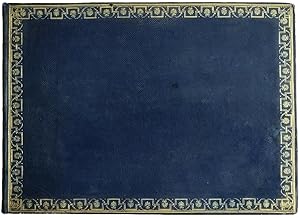

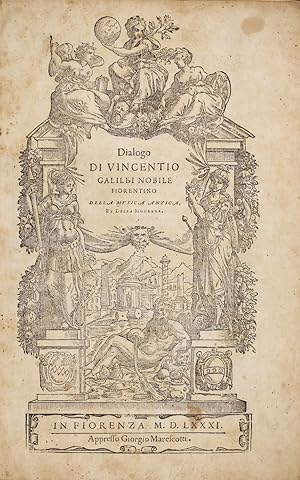
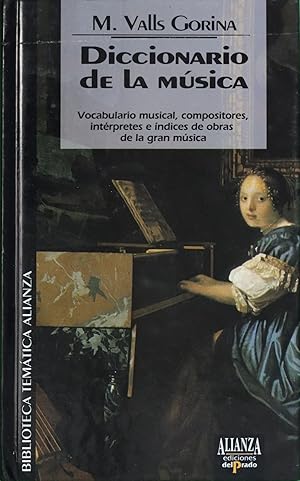
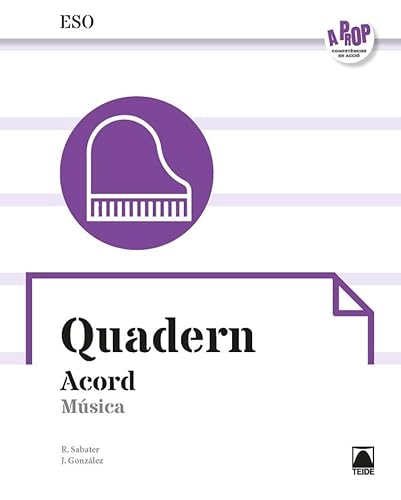
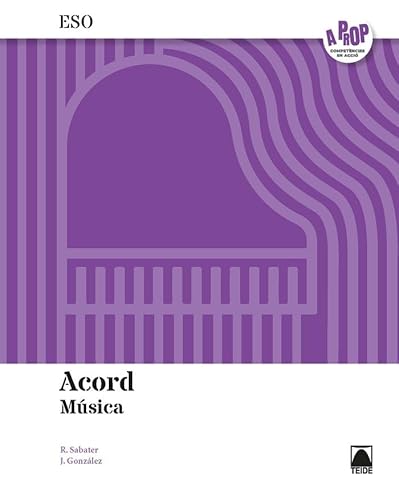
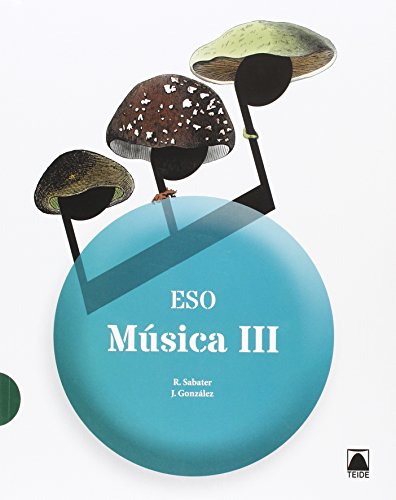
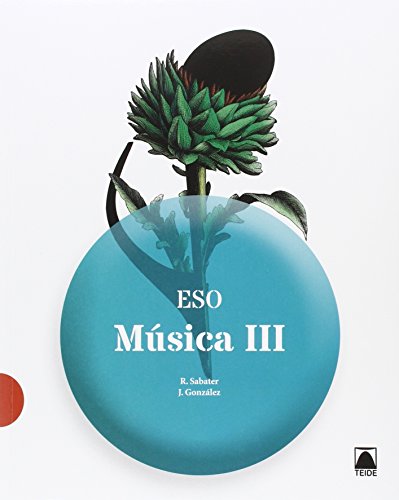
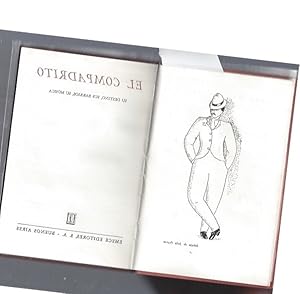
![Imagen del vendedor de Miscellanea musicale [.] divisa in tre parti. Dove con dottrine si discorre delle materie più curiose della musica [.]. a la venta por Antiquariat INLIBRIS Gilhofer Nfg. GmbH](https://pictures.abebooks.com/inventory/md/md30968491336.jpg)
![Imagen del vendedor de Alceste. Tragedia. Messa in Musica . Dedicata a sua Altezza Reale, L'Arciduca Pietro Leopoldo Gran-Duca di Toscana . [Partitur]. [In Typendruck]. a la venta por Antiquariat J. Voerster](https://pictures.abebooks.com/inventory/md/md31383823357.jpg)
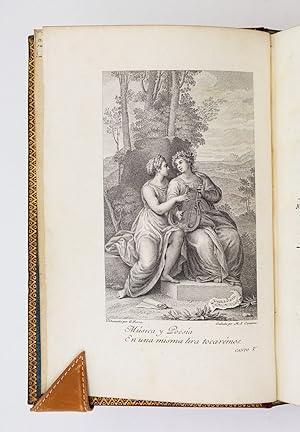
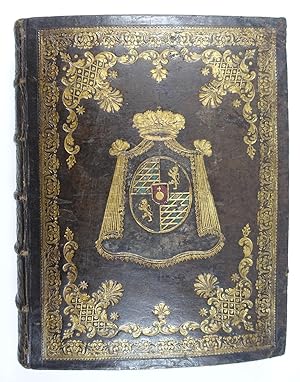
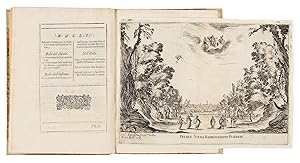
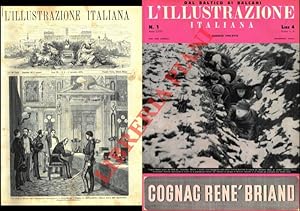
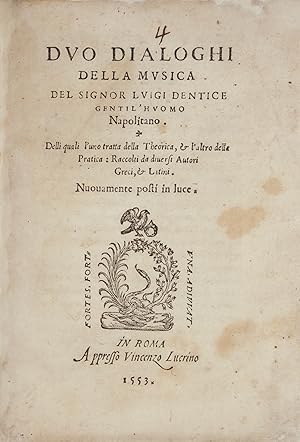
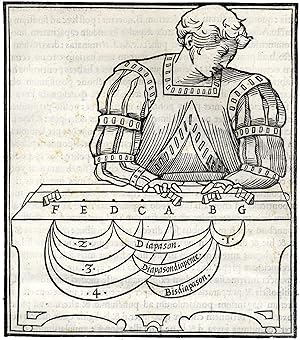
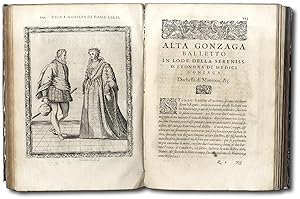
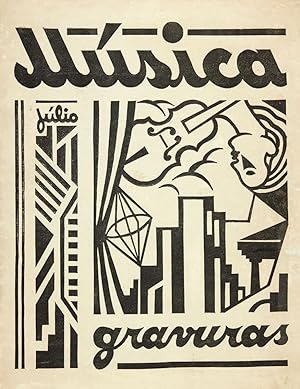
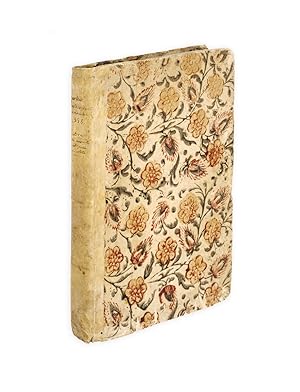
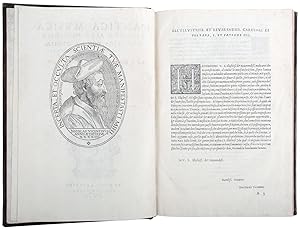
![Imagen del vendedor de Il Flauto Magico. Dramma per musica [ ] Die Zauberfloete. Grosse Oper in zwey Ackten. a la venta por Antiquariat INLIBRIS Gilhofer Nfg. GmbH](https://pictures.abebooks.com/inventory/md/md22618619924.jpg)
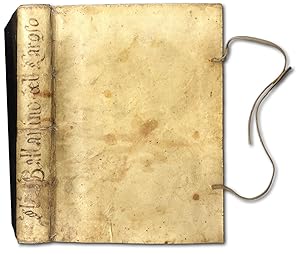
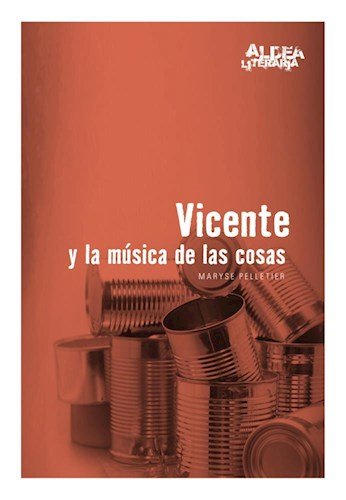
![Imagen del vendedor de Il Dissoluto Punito osia Il Don Giovanni. Dramma giocoso in due Atti posto in Musica da Wolfgang Amadeus Mozart. In Partitura. [2nd title:] Don Juan oder der steinerne Gast komische Oper in zwey Aufzügen in Musik gesezt von W. A. Mozart. Mit unterlegtem deutschen Texte nebst sämmtlichen von dem Komponisten später eingelegten Stücken. In Partitur. [Zweiter Akt.] [On covers:] Oeuvres de Mozart. Don Juan. Opéra comique en deux Actes. Acte I. [II.] No. 2 des Partitions. [K.527] a la venta por Földvári Books](https://pictures.abebooks.com/inventory/md/md30364211503.jpg)